A rey muerto, rey puesto
-Spanish proverb
The Iberians
Transcript of the college class lecture „The RomanRepublic“ in 2003, University of Minnesota, USA
[Prof. Saramotti speaking]:
Good day everyone to today’s class. Let me start right away with an announcement that Professor Marshal from Chicago will hold a special presentation about King Cambyses conquest of Anatolia and the impact to the Greek world. It’s certainly something you shouldn’t miss. Oh yes, the presentation itself is next Thursday at Coffman’s.
Alright, today’s topic is the second Punic war. As we look at the second Punic war and we notice something interesting: During the first ten years of the war hardly anything happened. We have already seen that an important war for the Romans started the same way… Right, the first Punic war. But we have to be more specific, because the first ten years of the war a man called Tiberius Cornelius Scipio Asina, the son of Lucius Cornelius Scipio who already fought in the first Punic war, conquered great parts of the Spanish coast up to Mastia in the south. From 220 BC to 210 BC most battles were just small skirmishes. The situation seemed to change in 210 BC when the Carthaginians under the military commander Mytonnes Neperis allied themselves with the strong Celtic tribe called Carpetani under the King Mutorke Carmocoi. This alliance with the Carpetani seemed to shift the balance for the Carthaginians. Hence Scipio Asina retreated back to Arsé in the north. The Roman Senate realized that Spain was now the battleground where the war with Carthage had to be fought and sent more troops to aid Scipio Asina
[Student asking]: Under what authority was Scipio in Spain for such a long time?
[Prof. Saramotti speaking]: Very good question. Scipio Asina became consul in - I think - 218 BC and went to Spain fighting Carthage like his father did. Once he finished his consulship he stayed there as a pro-consul. So he had complete command or “Imperium” over the troops there without actually being a consul. We will talk about this in more detail when we come to his son who was the first to bend the rules in that sense.
Anyway. In 209 BC it came to the first battle on a larger scale, the so called Battle of Ildum. But let’s take a break first.
[…]
The Roman Empire, by Wolfgang Schreier, Bonn 2003
The battle of Ildum in 209 BC marked the escalation of the second Punic war. Compared to the later battles it was still a small military clash, but it was an important one because the Romans won the battle and gained the initiative again. The Senate in Rome was also noticing Scipio Asinas effort in fighting the Carthaginians in mostly unknown lands.
Roman Hastati throwing spears at the aproaching enemy.
The Carthaginian army consited of numerous ethnic groups so that the Romans had to fight off different fighting techniques.
Though relying on mercanaries the Carthaginians also had their own elite troops. Here elite Hoplites fight against te Romans. These troops were a tough opponent for the Scipio.
Fabius mentioned the use of five African war elephants in the battle, but they did not have any major impact on the battle.
Far more important was the Roman cavallry which was used as shook troops to break and route the enemy army.
Scipio Asina knew how to use his victory and pushed with the rest of his troops including Celt Iberians auxiliary to the south where he captured the city Mastia including the general he defeated at Ildum - Mytonnes Nepheris.
His pro-consulship ran out that year and he returned to Rome celebrating a triumph. Scipio Asina remained with the Senate but did not run for Consul anymore.
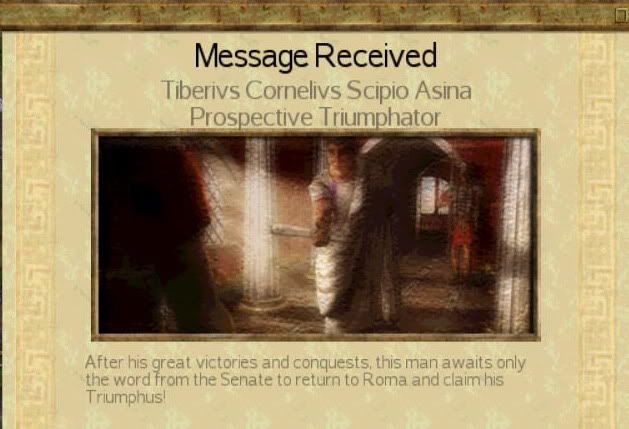
In the same year consul Titus Fabius Maximus won the battle of Segestia against the Ligures under the king Cador in North Italy. Now all of Italy was in control of Rome and this victory lead to the creation of a new province in North Italy called Gallia Cisalpina, which means “Gaul on this side of the Alps”.
The following years Carthage retreated to the southwest of Spain and reorganized their troops. The Romans had won a battle, but the war was not decided yet. Meanwhile the Carpentani tribe was keeping the Romans busy and small battles with some 5000 to 8.000 troops on both sides occurred every year. The situation seemed to change when a 26 year old Roman legate called Spurius Cornelius Sulla serving under pro-praetor Decimus Tullius Mes faced King Mutorke Carmocoi in battle.
Fabius - Ab Urbe Condita
(written at about 50 BC)
Book XIV
(4) In the winter of the year 550 ab urbe condita [204 BC] the Carpentani attacked roman lands in Spain under their King Mutorke Carmocoi. But before I will retell the story of the battle at Etovissa, I want to talk about both leaders.
Mutorke Carmocoi was a proud barbarian king of old age. He was loved by his people, he was a brave warrior, but also a brilliant leader. Among his people, it is said that he was the best hunter and no one could match his skills with the bow. Another legend says that since his birth Mutorke Carmocoi has never cried out of pain or fear. These kind of legends always surround famous leaders, nevertheless one thing can be said for sure; he was one of a proud barbarian king.
Spurius Cornelius Sulla came to Spain with the new pro-praetor Decimus Tullius Mes to Spain and. He served as a military tribune, queastor and military legate under his patron. Decimus Tullius Mes was not much of a fighter and let Sulla in command against the Iberians, despite Sulla being only in his 20ies. Sulla was born and educated in Rome, he was a smart man interested in politics and philosophy. He was a brilliant orator and many disputes were decided by his cunning and striking words. Nevertheless he was still young and inexperienced and of both Sulla was inferior to Carmocoi.
A history of Rome, by Prof Alfred Kennard, 2002 New York
The battle of Etovissa in 204 was one of the largest during the Roman-Iberian wars. While the Carthaginians were still reforming their army, the Carpentani were keeping the Romans busy.
Both armies were equal in numbers and strength. Fabius account on the leaders and the battle itself is difficult to examine, since it is filled with stereotypical views about the educated dynamic Roman general fighting the brave and strong yet uncivilized Barbarian.
The Iberians were renown fighters. Here an elite cavallry band gathers for battle.
A Roman manipel charging a small hill while being harrased with spears by the enemy.
The wise use of cavallry as a flanking unit won Sulla the advantage over the Iberian king.
Roman cavallry trampeling the fleeing enemy to death. It was not a habit to take prisoners.
In the end, the 26 year old Sulla won by using his cavalry to encircle the enemy and crushing the Carpentani completely. That the king Carmocoi was slain in battle added much prestige to Sullas name. It is no surprise that his career got a boost: the following year he was already elected as Curulian Aedile. Nevertheless the war was far from over, the Iberians and the Carthaginians were still strong enemies, but for now Rome had won the initiative.




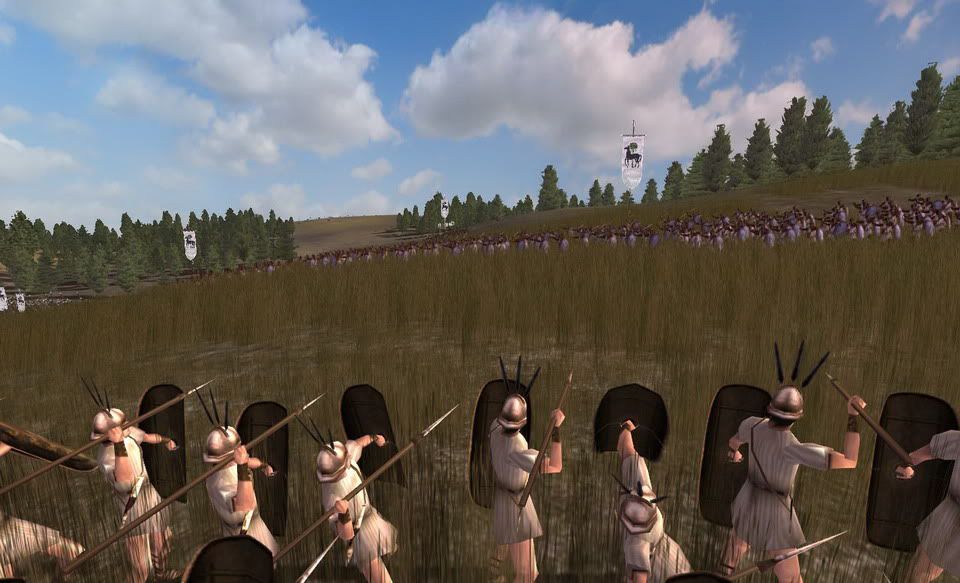
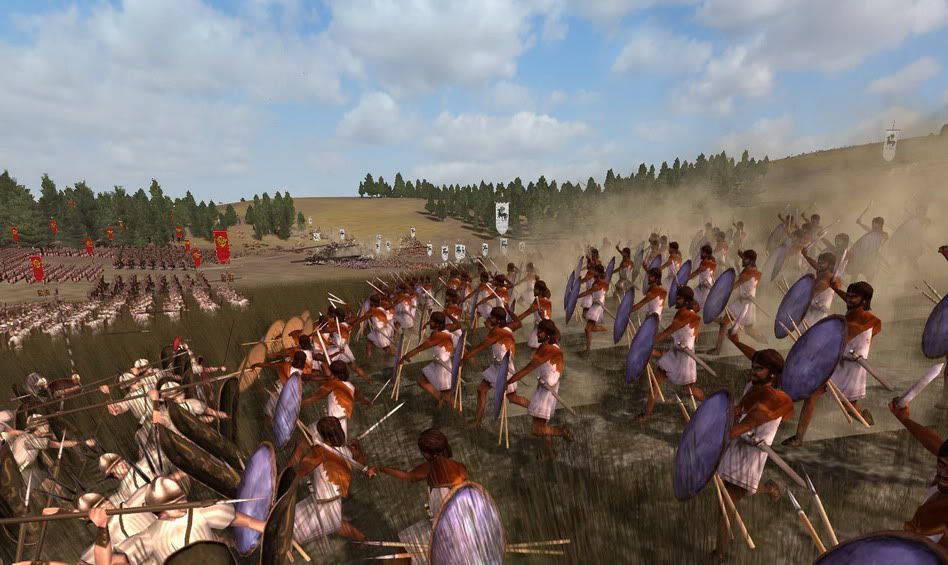
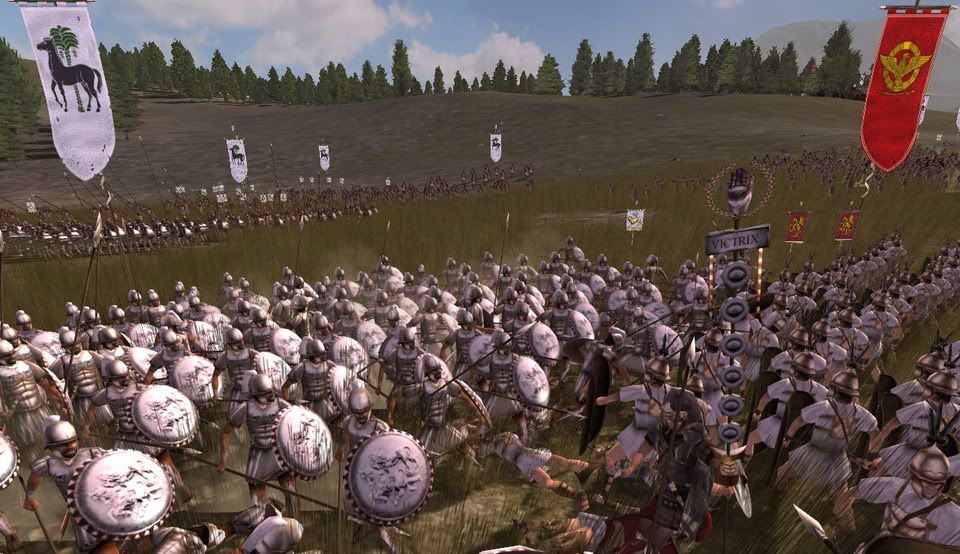
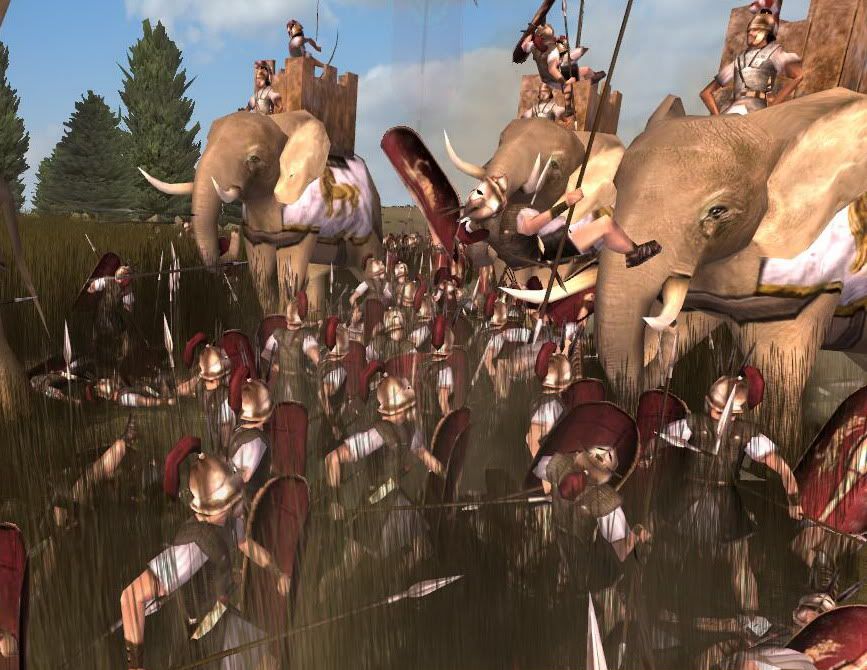
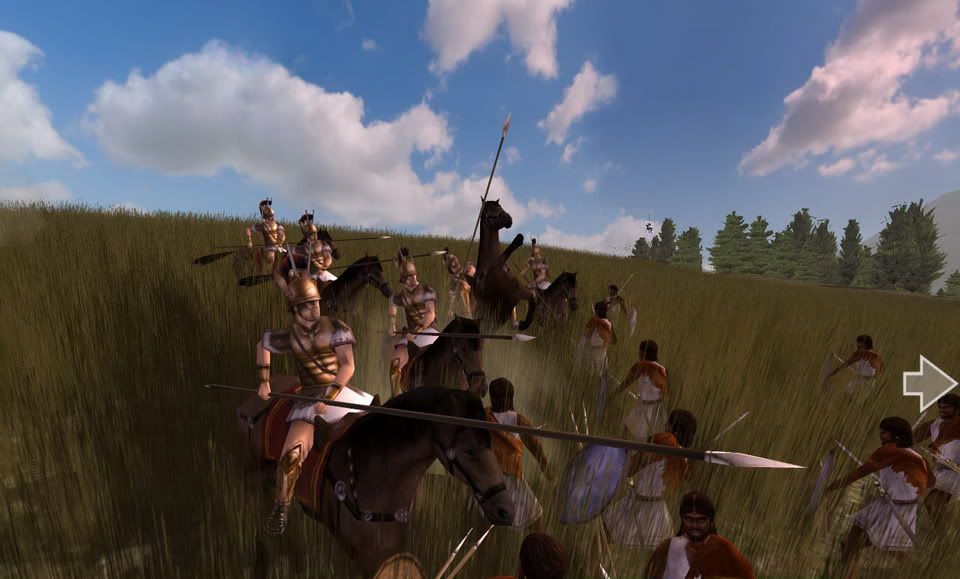


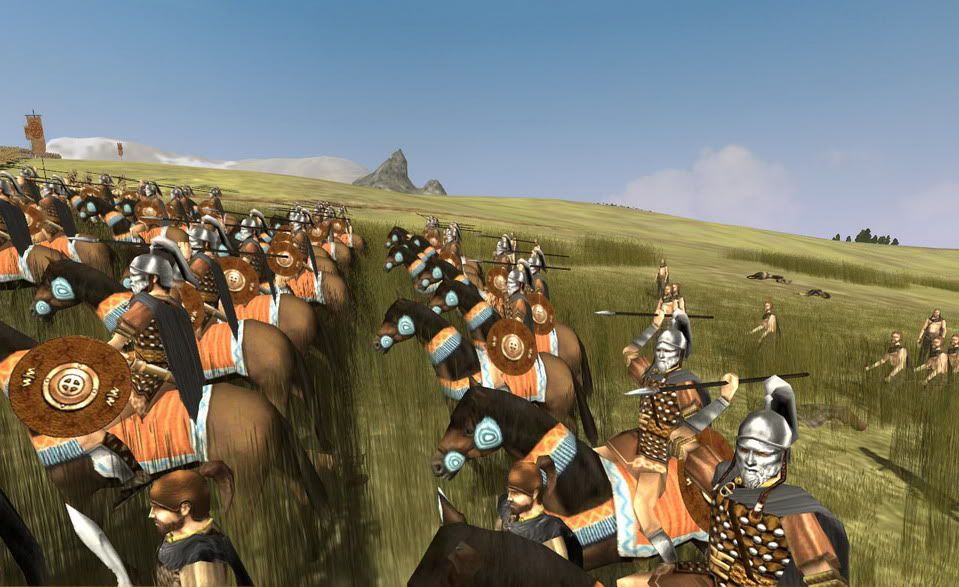
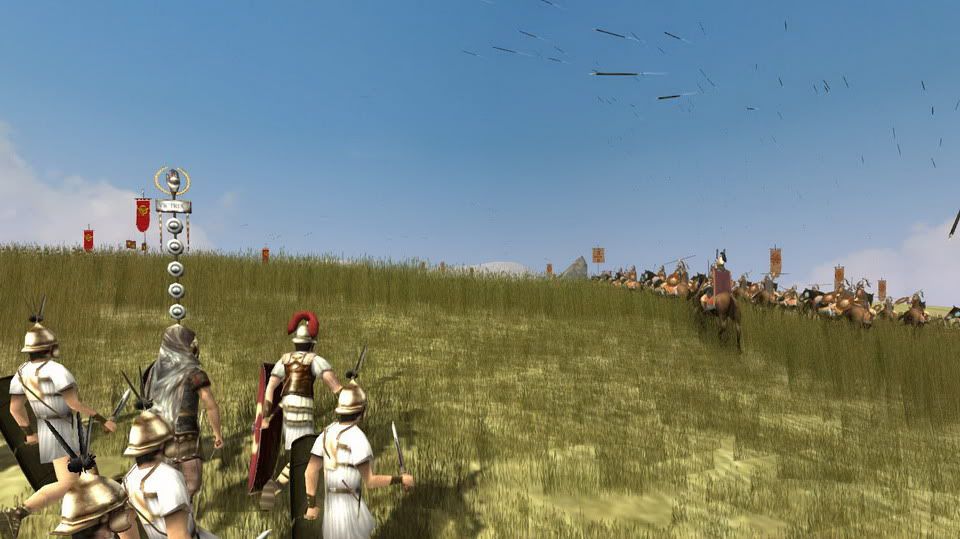
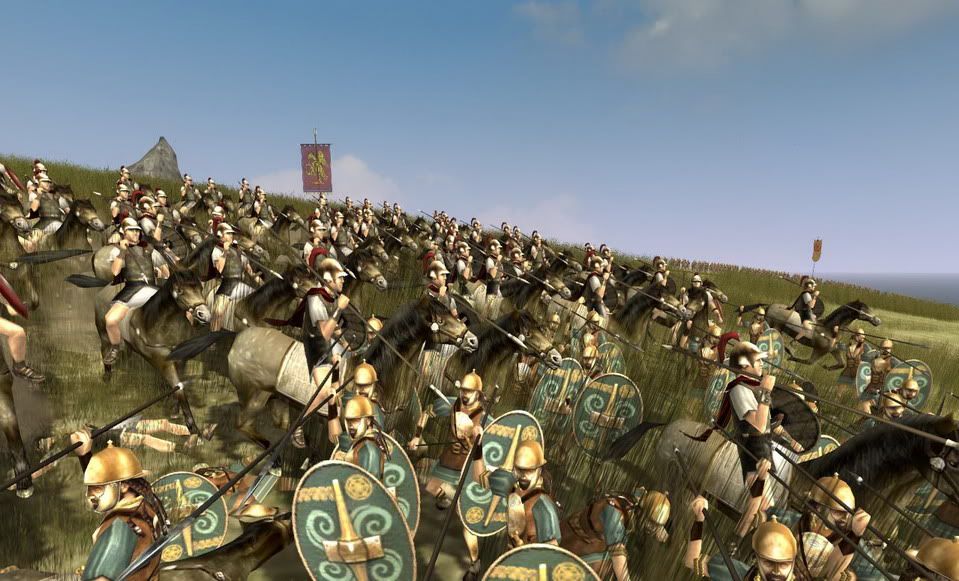

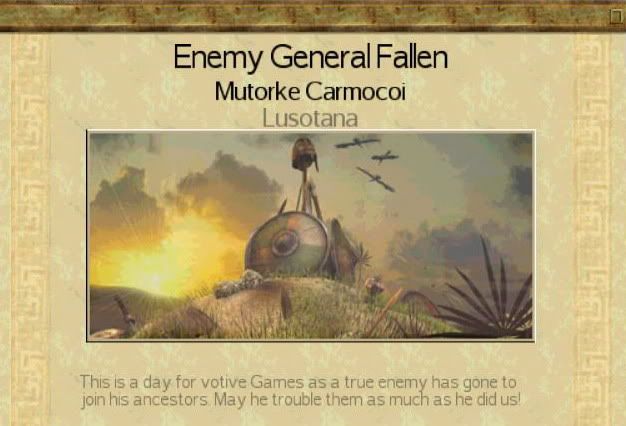


 Reply With Quote
Reply With Quote
Bookmarks